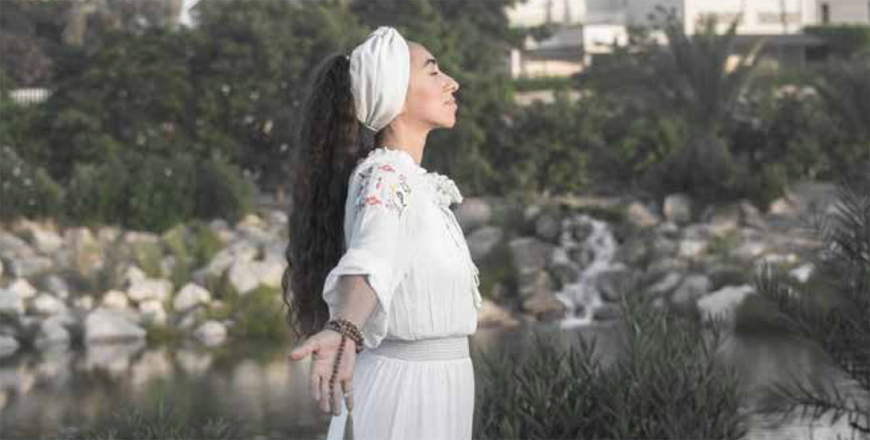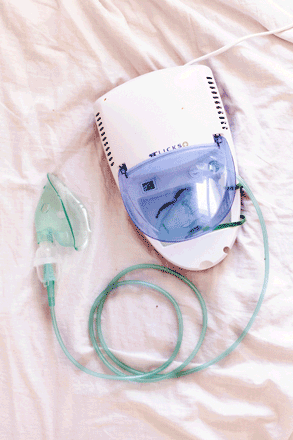You are here
The art of breathing with yoga
By Shama Kaur , Family Flavours - Jun 23,2024 - Last updated at Jun 23,2024

Photo courtesy of Family Flavours magazine
By Shama Kaur,
Kundalini Yoga Teacher & Wellness Mentor
World Asthma Day, observed each year on the first Tuesday of May, is a global effort to spread awareness about asthma, a common respiratory condition affecting people worldwide. The day aims to inform communities about asthma management, preventionand treatment.
By highlighting the importance of understanding asthma triggers and seeking proper care, World Asthma Day encourages everyone to take steps to manage their condition effectively.
Bringing harmony to your breathing
In yoga, asthma is often viewed as a disturbance in the flow of prana (life force energy) and the balance of the air element within the body.
According to yogic philosophy, the lungs are associated with the air element and are considered the primary organ for the exchange of prana.
When the flow of prana becomes disrupted or blocked, it can manifest as respiratory issues, such as asthma.
Emotionally, asthma may be related to feelings of grief, sadness, or unresolved emotional tension.
These emotions can contribute to constriction and imbalance in the chest area where the lungs are located.
Practicing yoga and breathwork techniques can help release these emotional blockages and restore harmony to the respiratory system.
In terms of chakras, asthma is often associated with imbalances in the heart chakra (Anahata) and throat chakra (Vishuddha). The heart chakra governs emotions related to love, compassion and self-acceptance.
The throat chakra is associated with communication, self-expression and creativity. Imbalances in these chakras may contribute to difficulty expressing oneself, suppressed emotions and tension in the chest and throat, which can exacerbate asthma symptoms.
Alleviating asthma
Pranayama is breath control and it is a fundamental part of Kundalini Yoga. According to the 3HO Foundation, the average rate of breathing for most people is 16 times per minute. When the rate of breathing increases, or if it becomes rapid and irregular, the mind also becomes disturbed and erratic.
Yoga practitioners believe that your rate of breathing and your state of mind are inseparable. When you learn how to focus your breath, you have more control over your mind, which influences mental well-being by reducing stress and calming negative responses.
Beyond mental wellness, researchers have found that mindful breathing also supports physical wellness. In controlling your breath, you can help strengthen the immune system and support the body’s response to disease. This is particularly important when it comes to respiratory health.
Yoga — A Remedy to Respiratory Illness by Dr Sripriya Krishnan states: “that many people with serious respiratory ailments have found a solution in yoga.”
He goes on to state that if the lungs are permanently damaged, as in chronic bronchitis, yoga teaches how to improve the mechanical efficiency of our breathing and make the most of our lung capacity.
Pranayama at home
With heightened awareness of respiratory wellness, many people are exploring the breathing exercises of pranayama at home. Here are two simple Kundalini Yoga breathing techniques you can practice anywhere to improve your respiratory health:
Technique 1: Long deep breathing
Long deep breathing uses the full capacity of the lungs by utilising the three parts of the lungs: abdominal or lower, chest or middle, clavicular or upper. Begin the inhale with an abdominal breath. Then add the chest breath and finish with a clavicular breath. All three are done in a smooth motion.
Start the exhale by relaxing the clavicle, then slowly emptying the chest. Finally, pull in the abdomen to force out any remaining air. Breathe through the nose, and focus on gradually slowing your breath. Continue for 26 breaths, or 3- 31 minutes.
Technique 2: Alternate nostril breathing
Sit in a comfortable position either on the floor or in a chair and maintain a straight spine. Using the thumb and index fingers of the right hand, make a “U” and use the thumb to close off the right nostril and the index finger to close off the left nostril.
Close the left nostril, inhale deeply through the right nostril. At the end of the inhale, close the right nostril and exhale through the left nostril.
Now inhale through the left nostril fully and deeply, then close the left nostril and exhale through the right one.
Again, inhale through the right nostril and continue alternate nostril breathing. The breath must be complete and full on both the inhalation and exhalation cycles, keeping the shoulders without tension and the body relaxed.
Continue for 3 - 5 minutes. To conclude, inhale deeply, hold the breath a few seconds, lower the hand and exhale.
Controlled breathing through pranayama can help improve respiratory health, which is even more important during the coronavirus pandemic.
To learn more visit kundaliniresearchinstitute.org and 3ho.org.
Reprinted with permission from Family Flavours magazine
Related Articles
How do you deal with different stressful situations? Here are healthy distractions to control and manage the physical (headache, chest heaviness, muscle tension) and psychological symptoms (racing negative thoughts, overwhelming emotions, anxiety, depression) of stress.
The practice brings to our awareness our self-limiting beliefs and habit patterns that we inherited from the past. It invites us to process and release painful memories that are stored in our subconscious. It awakens our ability to become intuitive and sensitive, to understand a person or a situation even if no words are spoken- to realise the consequences of actions before they happen.
AMMAN — Doctors are calling for the creation of “clear and specific” protocols for asthma patients in emergency rooms and medical care centr



















